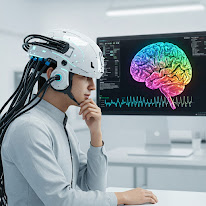How Brain Implants Are Revolutionizing Humanity: The Future of Neural Technologies
The future of human evolution is being reimagined by revolutionary advances in brain implant technology. These cutting-edge devices are not only paving the way for medical breakthroughs, but also opening the door to a new era of human cognition and potential.
What are brain implants?
Brain implants, also known as neural implants or brain-computer interfaces (BCIs), are advanced devices embedded in the human brain. These implants directly interact with the nervous system, allowing for cognitive enhancement, treatment of neurological disorders, and even the ability to control technology with simple thoughts.
Leading Companies in Brain Implant Technology
Neuralink: Founded by Elon Musk, Neuralink is a leader in brain implant technology. With its ambitious goals of developing holistic brain-machine interfaces, Neuralink aims to bridge the gap between the human brain and AI. Their long-term vision includes enhancing human intelligence, treating neurological diseases, and ultimately enabling direct brain-computer communication.
Kernel: Another innovator in this field, Kernel focuses on developing non-invasive brain interfaces designed to improve memory, cognition, and overall brain function. Their latest innovations are making waves in the healthcare sector and beyond.
Synchron: Taking a more medical approach, Synchron’s Stentrode is one of the first FDA-approved brain implants that allows patients with severe paralysis to control devices like smartphones and computers with their thoughts.
Cities and locations
Brain implant technology is not limited to one part of the world. Leading institutions and companies are making significant strides in cities around the world, including:
San Francisco, USA: Neuralink’s headquarters, where much of the groundbreaking work in neural technology takes place.
London, UK: Home to the neuroscience research center and home to Kernel’s European operations.
Sydney, Australia: Synchron is undergoing clinical trials in hospitals across Australia, helping people with severe disabilities regain mobility and independence.
Example of results: Real-world impact
One of the most notable success stories came from a patient in California who underwent the Neuralink procedure to treat his paralysis. After the implant, he regained control of his prosthetic limbs and was able to send text messages using only his thoughts. This points to the potential of brain implants not only to treat disabilities but also to enhance a person’s abilities.
Pricing
The cost of these modern implants varies depending on the technology and procedure. A typical brain implant can cost between $10,000 and $50,000, depending on the complexity of the surgery, the company providing the implant, and the intended purpose of the implant (medical or cognitive enhancement).
What do doctors and patients say?
Doctors are both excited and cautious about the potential of brain implants. Dr. Elizabeth Williams, a neurologist in New York City, says, “This technology has the potential to change lives, especially for patients with paralysis or neurodegenerative diseases. However, we need to proceed with caution to ensure long-term safety and effectiveness.”
Patients who have undergone the procedure, such as John Harper, who received the Synchron Stentrode, report life-changing results. “I can now send messages and control my environment with my thoughts. It’s a miracle.”
The Future of Humanity
As brain implants continue to evolve, they promise to redefine what it means to be human. Whether it’s medical applications like treating blindness or paralysis, or enhancing cognitive functions that allow us to interact directly with machines, these technologies are paving the way for a future where humans and machines work together.
For more on the future of technology and artificial intelligence, follow TECHNO AN for the latest news.












Comments
Post a Comment